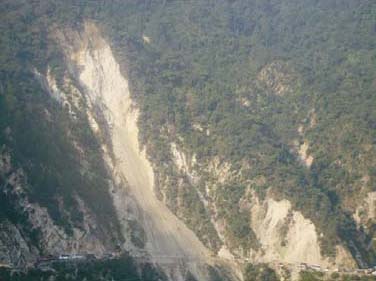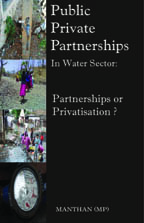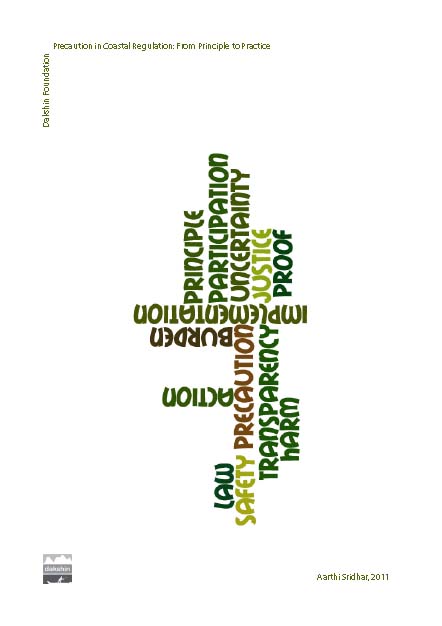/regions/political
Political
Forget Prometheus and remember Bhagiratha: Wrong and right thinking about rivers ' - Shri Ramaswamy Iyer s lecture at School of Environmental Sciences, Jawaharlal Nehru University (June 2011)
Posted on 22 Jun, 2011 09:55 AM“Current economic philosophy exalts consumption and growth. If we are hypnotised by visions of 8% or 10% growth, we are bound to ‘demand’ more and more and still more water; and either government engineers or private companies and their engineers will come up with supply-side answers in the form of large projects which will cause even greater distress to the rivers”.
Tehri Dam across Ganga
Source: haridwar.nic.in/ gangaji.htm
I am very grateful to Prof. Sudha Bhattacharya for having invited me to this Seminar. I was not sure whether what I have to say would fit in well with the theme of this Seminar, but she persuaded me to say yes, and so here I am.
Biodiversity, ecology and socioeconomic aspects of the Gundia river basin in the context of the proposed mega hydroelectric power project - A CES technical report
Posted on 21 Jun, 2011 11:23 PMThis report by the Centre for Ecological Sciences, Indian Institute of Science, Bangalore highlights and argues for the the case of saving the Gundia river, one of the most important tributaries of the river Kumaradhara in Hassan district in Karnataka, which is known for its very rich vegetation and biological wealth. This is in the context of the proposal put forward by the Karnataka Power Corporation Limited to implement the Hydroelectric project (GHEP) on the river.
Recent landslides in Uttarakhand - Nature’s fury or human folly – A paper in Current Science
Posted on 21 Jun, 2011 10:22 PM However, increasing anthropogenic intervention in the recent times appears to be contributing to terrain instability in addition to natural factors, as observed by increasing frequency and magnitude of landslides since 1970.
However, increasing anthropogenic intervention in the recent times appears to be contributing to terrain instability in addition to natural factors, as observed by increasing frequency and magnitude of landslides since 1970.
During August and September 2010, Uttarakhand Himalaya witnessed large-scale slope destabilization, particularly along the roads where widening work was in progress leading to huge damage. The cause of regional-scale landslides has been attributed to exceptionally high rainfall in the region during September. When the average rainfall for the month of August and September from 2000 to 2009 is compared with rainfall data of the same period of 2010, it was found that in September 2010, 336 per cent higher rainfall was received by the area. However, the question that arises is: was it unusual rainfall-induced calamity or a result of human intervention?
Economic valuation of forest soils - Study published in Current Science
Posted on 21 Jun, 2011 09:24 PMThe study area was located in Halol Range,Panchmahal District, Gujarat, stretching between long. 22°25′41″N and 22°29′06″N, and lat. 73°31′23″E and 73°35′35″E. Preservation plots present in the study area were selected for the current study.
Public Private Partnerships in the water sector: Partnerships or privatisation - A report and video by Manthan Adhyayan Kendra
Posted on 21 Jun, 2011 05:29 PM
This report and video by Manthan Adhyayan Kendra, looks at various aspects of PPPs, beginning from why PPPs have come to be regarded as the major approach for infrastructure development in the country, the circumstances that lead to the change in approach from direct privatisation to public-private partnerships, the current status of the PPP projects that are being executed in India, especially in the water sector, to the current estimates and projections of investment requirements for infrastructure development in India by governments and International Financial Institutions (IFIs).
Applications invited for CCMP Media Fellowships 2011 to the UN-COP17 climate summit at Durban - Apply by June 30, 2011
Posted on 21 Jun, 2011 04:08 PMThe Climate Change Media Partnership (CCMP) supports developing world journalism and perspectives from the heart of the international climate negotiations. The CCMP encourages public debate and scrutiny on climate change issues in the media at the local, national and international levels.
CCMP is proud to announce the launch of a fellowship programme that will send journalists to the United Nations Climate Change Conference in Durban (COP17)to be held during November 28 - December 9, 2011 .
Understanding the local controls of glacial retreat from the Baspa valley in Himachal Pradesh – A paper in Current Science
Posted on 21 Jun, 2011 03:01 PMIt explores the understanding of the local controls on the retreat of glaciers of the Baspa valley in Himachal Pradesh. The geomorphic records mapped are accumulation zone, exposed ablation zone, moraine-covered ablation zone, snout, deglaciated valley, lateral moraine, medial moraine, terminal moraine and hanging glacier.
Chemical characteristics responsible for the higher concentration of fluoride in groundwater - A paper in Springer Science
Posted on 21 Jun, 2011 01:42 PMFluoride is essential for normal bone growth, but its higher concentration in drinking water poses great health problems and fluorosis is common in many parts of India.
Precaution in coastal regulation - From principle to practice – A report by Dakshin Foundation
Posted on 21 Jun, 2011 11:45 AM The decision to act or not act, and further how to act in the face of unknowns or uncertainties is the subject matter of the precautionary principle (PP). It is against this historical backdrop of unknowns in environmental governance that the present study on the precautionary principle was conducted.
The decision to act or not act, and further how to act in the face of unknowns or uncertainties is the subject matter of the precautionary principle (PP). It is against this historical backdrop of unknowns in environmental governance that the present study on the precautionary principle was conducted.
The present framework for environmental governance provides a number of areas where precaution can and must be applied. In addition to these areas, the present report is the outcome of a descriptive study that shows the extent to which key elements of the precautionary principle are embedded in the specific case of two environmental laws related to coasts. The study examines key areas of the clearance continuum (law-making, clearance and monitoring) through a single broad question: To what extent is the approach of precaution embedded in decision-making under the CRZ Notification 1991 and the Water Act, 1974?
Sridhar attempted to examine this question on a continuum that examines a) the text of the law, b) the conditions under which projects are cleared or rejected and c) issues related to the monitoring of these conditions. The Asia and Pacific Workshop Report of the Precautionary Principle Project declared that there are both explicit and implicit uses of the precautionary principle. It states that there are some instances where the PP’s application is explicit and unambiguous whereas in other decisions the PP is implicit. They also raise an important point that to actually determine whether a decision was indeed precautionary or not (where it is not explicit) requires an examination of the context and motivations for decisions and management interventions.
Down the drain – Exploring traditional water systems - A film by Tarun Jayaram
Posted on 21 Jun, 2011 10:41 AM
down the drain from tarun jayaram on Vimeo.
These are some of the questions which led Tarun Jayaram, the film-maker to explore traditional water systems in the country. From the documentary’s opening moments, the director engages us with a beautifully shot array of footages ranging from pilgrims taking a holy dip of Ganges to beautiful baolis and tankas of Rajasthan to the ancient town of Hampi in Karnataka, while establishing how rivers have been an integral part of Indian culture and how its rich tradition of harvesting rainwater needs to be re-established to deal with the present day water crisis. Over the refreshing images and soothing audio, it advocates the need for community participation in rejuvenating the traditional methods of rainwater harvesting.